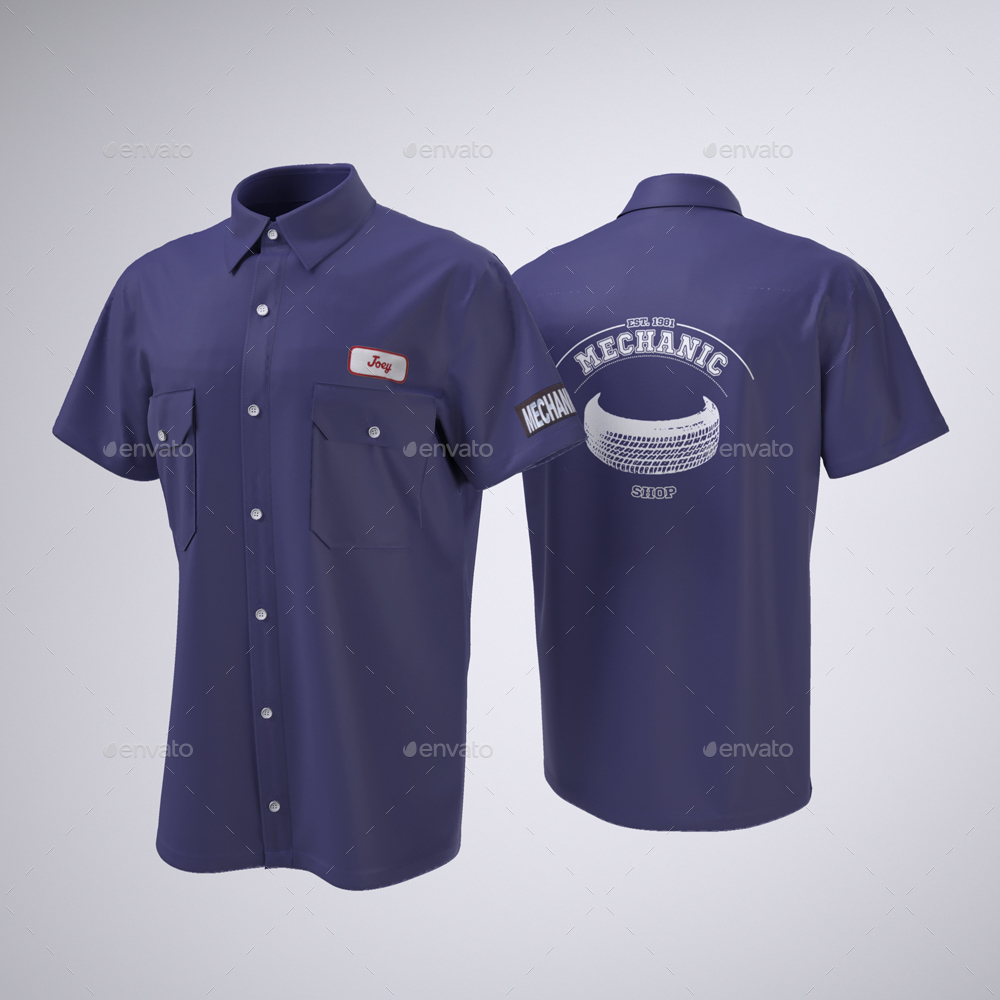
Uniform Shirt Mockup: A Comprehensive Guide for Representing Your Brand with Style
In today’s competitive business landscape, presenting a polished and professional image is of paramount importance. Uniforms play a pivotal role in shaping this image, fostering a sense of unity, discipline, and brand recognition. To showcase your uniform designs effectively, employing a uniform shirt mockup is an invaluable tool.
What is a Uniform Shirt Mockup?
A uniform shirt mockup is a digital representation of a shirt that can be customized to display your specific designs, logos, and colors. It provides a realistic preview of how your uniform will appear in real-world scenarios, allowing you to evaluate and refine your designs before production.
Benefits of Using a Uniform Shirt Mockup
- Visualize your designs: Bring your uniform concepts to life and preview them before committing to production.
- Experiment with different designs: Explore various design elements, color combinations, and branding options without the cost and effort of physical samples.
- Present your ideas effectively: Engage stakeholders and clients with professional-looking presentations that showcase your uniform designs in a realistic context.
- Make informed decisions: Use mockups to compare different design iterations, identify potential issues, and make data-driven decisions regarding your uniform design.
- Save time and resources: Streamline the design and production process by eliminating the need for physical prototypes and multiple rounds of design revisions.
Creating a Uniform Shirt Mockup
Creating a uniform shirt mockup typically involves using graphic design software, such as Adobe Photoshop or GIMP. Here are the key steps:
- Acquire a shirt template: Source a high-quality shirt template that aligns with your garment specifications, including collar style, sleeve length, and fabric texture.
- Import your design: Transfer your uniform design, including logos, patterns, and text elements, into the digital shirt template.
- Align and adjust: Position your design elements precisely and adjust their scale and orientation to create a realistic representation of your shirt.
- Add shadows and lighting: Utilize lighting and shadow effects to enhance the depth and realism of your mockup, giving it a three-dimensional appearance.
- Export your mockup: Save your completed mockup in a high-resolution format, such as PNG or JPEG, for easy sharing and presentation.
Customizing Your Uniform Shirt Mockup
Once you have created a base mockup, you can customize it to showcase your unique brand identity:
- Change colors: Adjust the shirt color and branding elements to match your corporate guidelines.
- Add branding: Emblazon your uniform with your company logo, name, or other branding elements.
- Showcase details: Highlight specific design features, such as embroidery, pockets, or reflective striping.
- Create variations: Explore different design options, such as alternate collar styles or sleeve lengths, to present a comprehensive range of uniform choices.
Best Practices for Uniform Shirt Mockups
- Use high-quality templates: Invest in professional shirt templates that provide accurate and realistic representations of different garment styles.
- Attention to detail: Pay careful attention to design alignment, color accuracy, and other details to ensure your mockup reflects the intended design.
- Consider different perspectives: Create mockups that showcase the shirt from multiple angles, including front, back, and side views.
- Provide context: Place your shirt mockup in a relevant context, such as a workplace or retail setting, to provide a realistic impression of its usage.
- Seek feedback: Share your mockups with colleagues, clients, or a focus group to gather valuable insights and refine your design.
Conclusion
A uniform shirt mockup is an essential tool for businesses and organizations seeking to present their uniforms in a captivating and professional manner. By leveraging the power of digital mockups, you can visualize your designs, experiment with different concepts, and make informed decisions regarding your uniform design. Embrace the opportunities offered by uniform shirt mockups to enhance your brand image and create a cohesive and polished uniform solution.
Frequently Asked Questions (FAQs)
Q1: What software is recommended for creating uniform shirt mockups?
- Adobe Photoshop
- GIMP
- Canva
- CorelDRAW
Q2: Where can I find high-quality shirt templates?
- Adobe Stock
- Shutterstock
- Istockphoto
- Freepik
Q3: What file formats are suitable for uniform shirt mockups?
- PNG
- JPEG
- PSD
- AI
Q4: How do I ensure the color accuracy of my mockup?
- Use calibrated monitors and printers to ensure accurate color representation.
- Refer to Pantone color codes or physical color swatches for precise color matching.
Q5: Can I use mockups to create custom uniforms?
- Yes, mockups can be used to create customized uniforms by incorporating specific design elements, branding, and color combinations.
Q6: How do I showcase my mockups effectively?
- Use mockups in presentations, website displays, social media posts, and marketing materials.
- Provide context by placing your mockups in realistic settings or on models.
Q7: What are the benefits of using mockups over physical prototypes?
- Time-saving
- Cost-effective
- Allows for easy design iterations
- Facilitates stakeholder collaboration and feedback
Q8: How can I create mockups for different shirt styles?
- Acquire shirt templates that represent the desired collar style, sleeve length, and fabric type.
- Adjust the mockup to accurately reflect the specific shirt design.
Q9: Can I add accessories to my uniform mockups?
- Yes, you can include accessories such as ties, hats, and other items to enhance the realism of your mockup.
Q10: How do I use mockups to communicate my uniform design to stakeholders?
- Create mockups that clearly showcase the key design features and branding elements.
- Use mockups in presentations and discussions to foster understanding and alignment.






